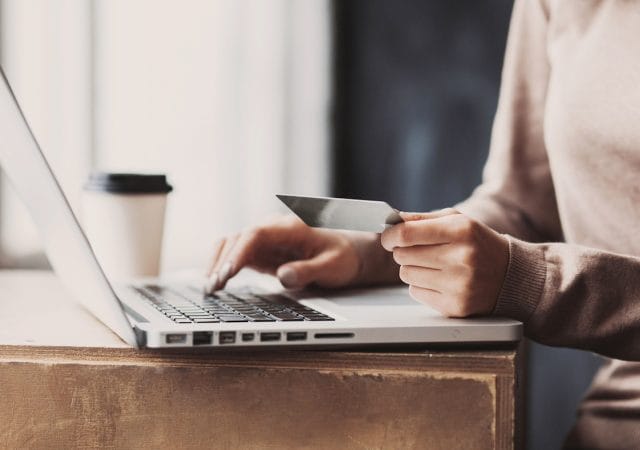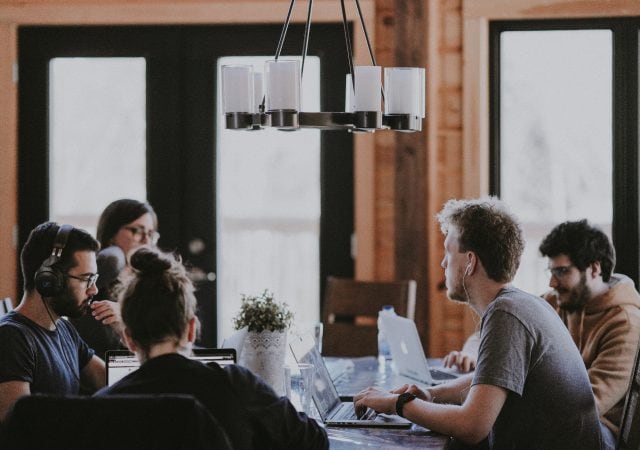In the first eight months of 2020, the restaurant industry dropped 35% in terms of the number of visits. The fast food sector was able to limit its losses by focusing on takeaways, yet still lost half of its revenue during the lockdown from March to May*. To address their most critical needs, many players very quickly turned to digitalisation. Let’s take a look at the innovations that have cushioned the impact and, most importantly, allow us to prepare for the future.
Click & collect and home delivery: the crux of the issue
To comply with social distancing, restaurants have no choice but to go digital. Click & collect and home delivery are emerging as the only two options to keep business going during the lockdown. But they also are tried and tested alternatives that work even in “normal” times.
Having a digitalised customer journey is now unavoidable to be able to attract and retain customers, long after stay-at-home orders come to an end.
Even before the pandemic, the best received customer journey was click & collect, with a 51% increase in the fast food sector over last two years**. This option lets customers pay from home and collect their order on site, giving rise to a profound change in consumption habits: customers like the combination of a speedy order, ease of payment, and control over the collection time.
The Del Arte brand has been using click & collect for many years, and it has already proven its worth. It recently supplemented its delivery offering via dedicated platforms (Uber Eats, etc.). Dalenys supported Del Arte restaurants by pursuing the group’s desire to digitalise its sales channels with a network of mostly franchise partners. Now more than 200 restaurants offer click & collect. A valuable asset to counteract a turbulent crisis.
For the Marie Blachere bakery, click & collect was rolled out in record time during the lockdown from March to April. Dalenys staff quickly reacted to expedite the desired large-scale deployment of the Blachère group, thanks to which hundreds of Marie Blachère bakeries can now take click & collect orders via the group’s website.
Read also the article: http://dalenys.annarenaudin.net/fr/blog/marie-blachere-innove-avec-le-deploiement-du-click-and-collect-en-boulangerie/
Pay by link and in-app payments: keeping the restaurant service
Where health restrictions allow, another customer experience has become key: digital orders and/or payments to enjoy a restaurant meal without having to go and pay at the counter. Various technologies come into play here.
In-app payments allow customers to download the app of the establishment they’re at, so that they can place their order and make a payment on the app. Payment technology integrated in the app makes it possible to offer several different journeys, suitable for both home and on-site consumption. Customers can collect their order either from a collection counter inside the establishment, or from a drive-through window (for fast food); orders can also be brought directly to customers’ tables. Some apps are also designed to join up payments with a loyalty scheme, and to give the option of a split bill for groups.

Other players have set up the “Pay by link” which sends the customer a payment link to pay directly on their smartphone. All this avoids having contact with the waiter or payment terminal.
Find out more: http://dalenys.annarenaudin.net/fr/blog/pay-by-link-developpez-la-distanciation-en-magasin-grace-aux-liens-de-paiement/
A sector moving towards unified commerce
Across all of these customer experiences, digital channels to take orders and payments are being integrated with the restaurant itself, which prepares the food and fulfils the order. These are essentially omni-channel projects to which the technology used must be adapted. The payment platform must be unified to manage end-to-end transactions with centralised data handling.
In a sector where both offline and online restaurant chains and franchisees co-exist, having a single interface to control payments is paramount. These good practices have been swiftly rolled out in the food services sector, but are also suitable for other businesses which have a wide range of initiatives currently under way.
Want to learn more about our unified commerce solutions? Visit our website: http://dalenys.annarenaudin.net/fr/commerce-unifie/
*Source: NPD panel, food service industry figures since the start of 2020, published in September 2020. Between January and August 2020, the market dropped 35% in terms of numbers of visits and 37% in terms of spending, ranging from -25% for fast food to 45% for table service. 70% of losses were recorded during the lockdown alone.
**Les Échos study, January 2020




